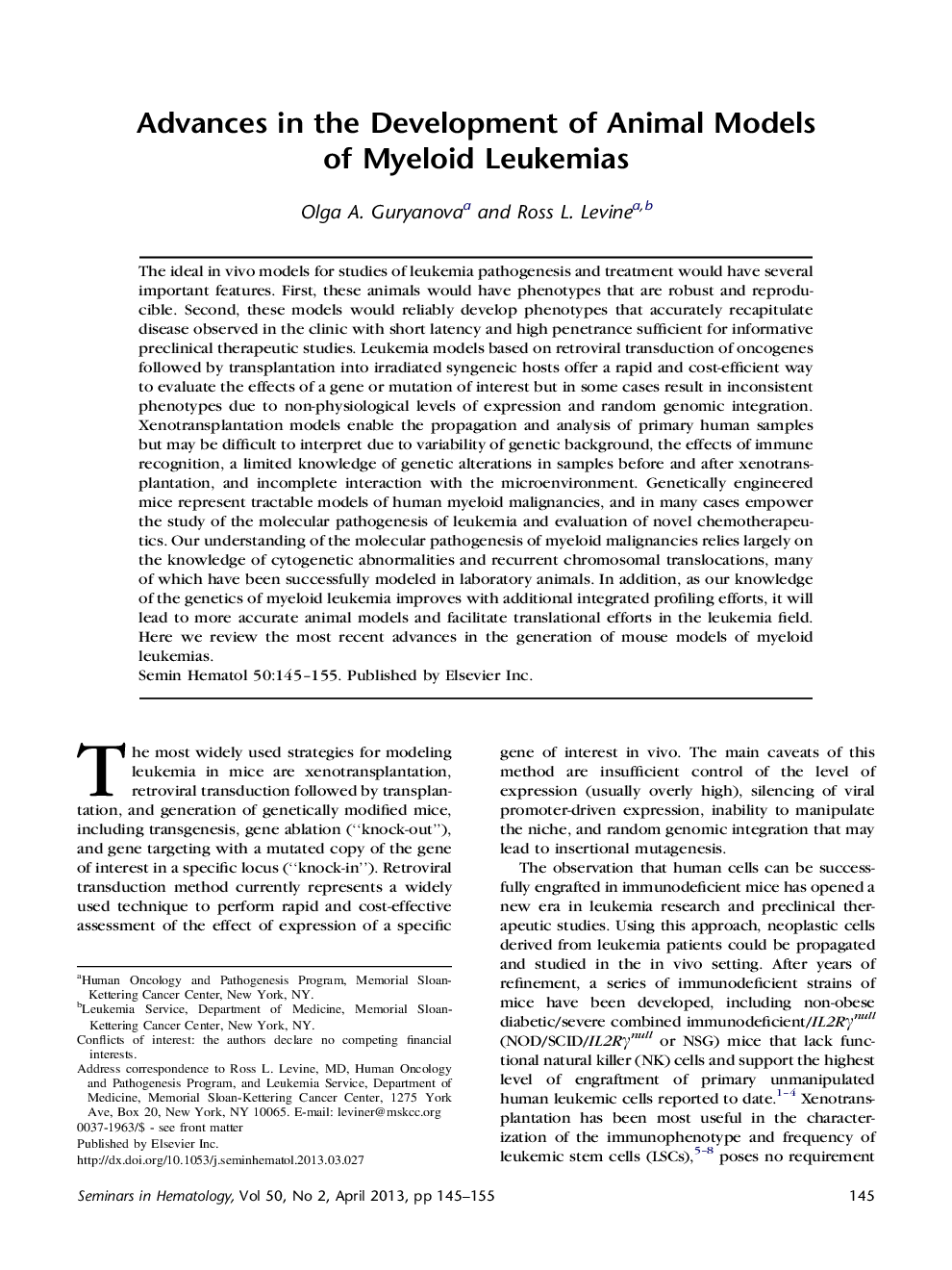| Article ID | Journal | Published Year | Pages | File Type |
|---|---|---|---|---|
| 6113784 | Seminars in Hematology | 2013 | 11 Pages |
Abstract
The ideal in vivo models for studies of leukemia pathogenesis and treatment would have several important features. First, these animals would have phenotypes that are robust and reproducible. Second, these models would reliably develop phenotypes that accurately recapitulate disease observed in the clinic with short latency and high penetrance sufficient for informative preclinical therapeutic studies. Leukemia models based on retroviral transduction of oncogenes followed by transplantation into irradiated syngeneic hosts offer a rapid and cost-efficient way to evaluate the effects of a gene or mutation of interest but in some cases result in inconsistent phenotypes due to non-physiological levels of expression and random genomic integration. Xenotransplantation models enable the propagation and analysis of primary human samples but may be difficult to interpret due to variability of genetic background, the effects of immune recognition, a limited knowledge of genetic alterations in samples before and after xenotransplantation, and incomplete interaction with the microenvironment. Genetically engineered mice represent tractable models of human myeloid malignancies, and in many cases empower the study of the molecular pathogenesis of leukemia and evaluation of novel chemotherapeutics. Our understanding of the molecular pathogenesis of myeloid malignancies relies largely on the knowledge of cytogenetic abnormalities and recurrent chromosomal translocations, many of which have been successfully modeled in laboratory animals. In addition, as our knowledge of the genetics of myeloid leukemia improves with additional integrated profiling efforts, it will lead to more accurate animal models and facilitate translational efforts in the leukemia field. Here we review the most recent advances in the generation of mouse models of myeloid leukemias.
Related Topics
Health Sciences
Medicine and Dentistry
Hematology
Authors
Olga A. Guryanova, Ross L. Levine,
